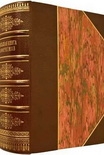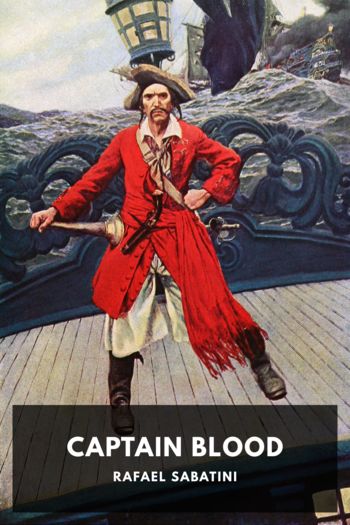Lemuria by Burt Clinchandhill (epub e ink reader TXT) 📕

Read free book «Lemuria by Burt Clinchandhill (epub e ink reader TXT) 📕» - read online or download for free at americanlibrarybooks.com
- Author: Burt Clinchandhill
Read book online «Lemuria by Burt Clinchandhill (epub e ink reader TXT) 📕». Author - Burt Clinchandhill
Chapter 5 – Specola Vaticana
Rome, Italy, The Present
A tall man, dressed in a cassock and clearly in a hurry, steered his bike along the Anfiteatro Saveriano, the amphitheater built in AD 315 by Emperor Septimus Severus’s Legio Secunda Parthica, the Imperial Roman legion. After a quick look left and right, he sped his bike onto the Via del Cimiterio.
“Good morning.” The priest turned his head to the cemetery on the left as he had done so many days before. In 1995, Lamberto Natale De Cremonese moved to Rome after working as an assistant professor at the Department of Physics and Astronomy at the University of Bologna. After entering the Society of Jesus in 1996 and taking his vows as a brother, he was assigned the function of astronomer to the Vatican Observatory, the Specola Vaticana. After fifteen years, De Cremonese was named Director of the Vatican Observatory by Pope Benedict XVI, giving him the unofficial title, the Pope’s astronomer.
In his late fifties, with a boyish smile and beady eyes, he had been able to unite science and faith to the masses. His TED Talks made him even more popular with both scientists and men of the cloth. With his square gray beard and a full head of equally colored hair waving in the wind, he turned onto the narrow Viale PioXI, not noticing the old model gray Fiat Regatta. De Cremonese’s back wheel almost slipped from under him as he braked, startled by the car’s horn.
“Porca miseria!” the man in the car shouted from the open window as De Cremonese regained his balance.
“Mi dispiace,” De Cremonese apologized, shouting back after the car that steered away.
Now standing on his pedals, he picked up the pace, swinging his weight from left to right and back on every turn of his legs. As a kid on a bike in the streets of Bologna, his parents were called to the hospital on more than one occasion because the young Lamberto broke another bone crashing his bike into the road, another bike, a car or a wall. A mile down the road, breathing heavily, he turned right and passed through a tunnel just wide enough for one bike, and exited onto the Piazza Della Liberta. He put some extra weight on the pedals to steer up the slight incline of paving stones.
Some thirty miles south of Vatican City, Castel Gandolfo, in Rome, was built as a ‘Palazzo Papale.’ The palace lay next to the Lago Albano, a spring-fed lake whose origin is a gigantic volcanic crater, two and a half miles long. The 1.4-mile wide and 560-foot deep lake was the deepest in Italy. The Vatican acquired the palace in 1596 from the Savelli family when they couldn’t pay their debt to the Papacy. Maffeo Barberini, cardinal and son of a Florentine nobleman, was assigned by the Vatican to modernize the place and had Swiss-Italian architect Carlo Maderno design it into a modern palace worthy as a Papal summer vacation house. In 1623, Maffeo Barberini himself became Pope Urban VIII, who spent his summers at the palace. Since then, many popes spent their summers at the Castel Gandolfo, and some had even died there. Ironically, the entire area, at some point, was the palace of the Roman Emperor Domitian, who ruled from AD 81 until AD 96 and was the first emperor who systematically persecuted the Christians. As the palace and the grounds lay beyond the borders of Vatican City, they’re afforded the extraterritorial status as one of the properties of the Holy See. Much like embassies have in foreign countries.
“Buongiorno.” De Cremonese greeted two guards as he passed the arched doorway of Castel Gandolfo and drove his bike onto the square courtyard of the Papal Palace. De Cremonese jumped off his bike and parked it against the bright yellow wall next to two large black wooden doors. He grabbed the iron door handles and swung them open. Behind the doors, a man sat on a stool reading La Gazzetta dello Sport.
“Where is he?”
Startled, the man looked up from his newspaper. “Who?”
De Cremonese waved a hand in the air. “Brother Matteo.”
“Sorry. Of course,” the man stammered. “He asked me to tell you he was on the roof terrace.”
In a few steps, De Cremonese reached the back of the hallway, where he opened the carved white door. With big steps, he went through it and walked into the central corridor. Usually part of the museum tour but now closed for renovations, the central hallway was a loved tourist attraction in itself. The multi-colored shining marble floors of the 15-foot wide, one hundred-foot-long hallway reflected the walls decorated with graceful pastoral scenes by the eighteenth-century painter Pier Leone Ghezzi below the baroque stucco arched ceilings. Leaving the echo of his heals behind, De Cremonese dashed onto the stairs to the second floor, passing the historical museum with the portraits of popes, liturgical furniture and papal guard costumes and past the bedroom where Pius XII and Paul VI had died long ago. There, he took a shortcut to the terrace by entering another stairwell that took him to, and then through, one of the two telescope rooms.
On top of the Papal Palace—dating back to the reforming of the Gregorian calendar by Pope Gregory XIII and built under the advisement of astronomer Christopher Clavius—one of the oldest observatories in the world was created. The more modern telescopes of the “Specola Vaticana” in the observatories dated from 1935.
Back then, the Vatican was eager to show that science and religion go well together. At the end of the nineteenth century, an anti-scientific movement started that claimed that the church was anti-intellectual. Therefore, Pope Leo XII wanted to show the world that the Vatican supported science and, in 1891, officially attracted astronomers to do research for the church. Since the founding, they produced many important scientific papers and made several significant discoveries at the observatory. One of them being the delivery of photographic





Comments (0)